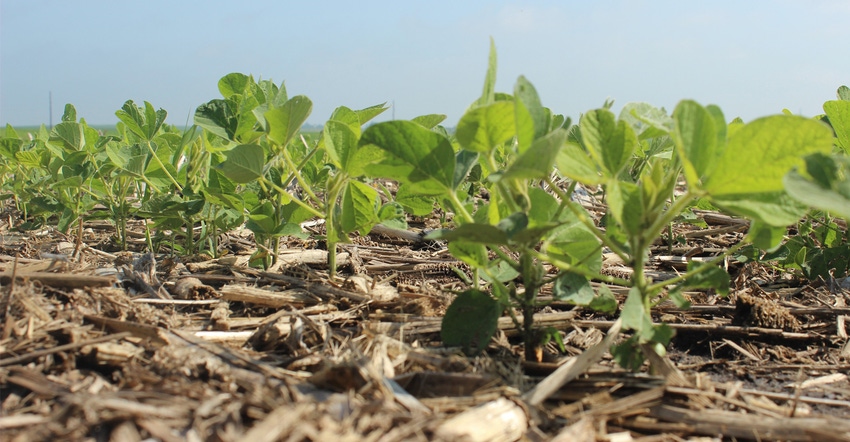July 26, 2018

Spring is a great time of year. It’s a rebirth of sorts, with fresh growth across the landscape. A new beginning to the growing season brings yet another opportunity to refine cropping system management.
Spring also exposes crop production challenges when heavy rains sweep across the state, and we see the damage water can do in our fields, giving us more reasons to re-evaluate and fine-tune our crop production system.
In a previous article last summer, Farming prairie potholes (and other wet areas, I challenged you to consider whether or not prairie potholes should be farmed. Now I’m asking you to consider no-till planting soybeans and putting cover crops ahead of soybeans in the crop rotation. This feels like a modest challenge. I’m not asking for a complete overhaul of your cropping systems. I’m only asking that a small incremental change be made.
Balance profitability, stewardship
I’m often asked what “cropping system” means. It’s simple. A cropping system involves individual management practices that go into producing a crop, such as nutrient management plans, herbicide programs, seed selection, planting practices, etc. Focusing on the whole crop production system over the course of several years is a way to balance profitability and environmental stewardship.
There are two keys to this statement. First, profitability must be thought of at the onset of crop year planning, but it should factor in the past with an eye toward the future. The second point is environmental stewardship. This means taking care of the land we depend on as individuals and as a nation. Where can we place practices that will benefit the cropping system and the community around us? The lowest hanging fruit is the placement of waterways, terraces and buffer strips. Through innovations of farmers and researchers, we are now talking about using native prairie species instead of solid-seeded perennial grasses in those areas.
Evaluate what you saw happen this year
Now that crops are growing tall, this is an excellent time to evaluate what you saw this spring and consider grabbing for a little higher hanging fruit on the conservation tree. Just like you, spring is my busy season as I’m driving to research plots and conducting field calls.
During my spring drives, I saw the impact of the heavy rains on soil erosion. At one point after a big storm, I came across emerging crops that were bisected by a newly formed gully. I decided to follow the path left by this running water. The flow path of erosion was about 3.5 miles, of which only 1 mile was protected by a grass waterway.
What could we have done to prevent these problems? We need to think about it because heavy rains are going to continue to happen and increase in frequency.
Again, the low-hanging fruit is to install grass waterways. My challenge for you today is to no-till plant your soybeans, and plant a cover crop ahead of the beans to increase the amount of crop residue protection in the spring before the bean crop emerges.
No-tilling beans helps pay for cover crop
One of the projects I follow is a no-till soybean field planted into corn residue. As I’ve monitored this field, I haven’t seen delayed growth. Think about the cost saving by no-till planting. No-till planting alone could save $20 to $25 per acre. Such savings could go a long way to implementing nutrient management or cover crops within your cropping system.
Take the opportunity to evaluate your cropping systems. While adopting cover crops ahead of soybeans will come with added cost, it also acquires a cost savings from no-till planting. No-tilling soybeans does work, and cover crops before soybeans is a viable option. These are two easy entry points to being more profitable and more environmentally friendly. Do the math: If all Iowa farmers were to no-till soybeans and plant cover crops before soybeans, Iowa will be a lot closer to the number of acres needed to make a real difference in our water quality.
Licht is an assistant professor and Extension cropping systems specialist at Iowa State University, and an Iowa Learning Farms collaborator.
About the Author(s)
You May Also Like






